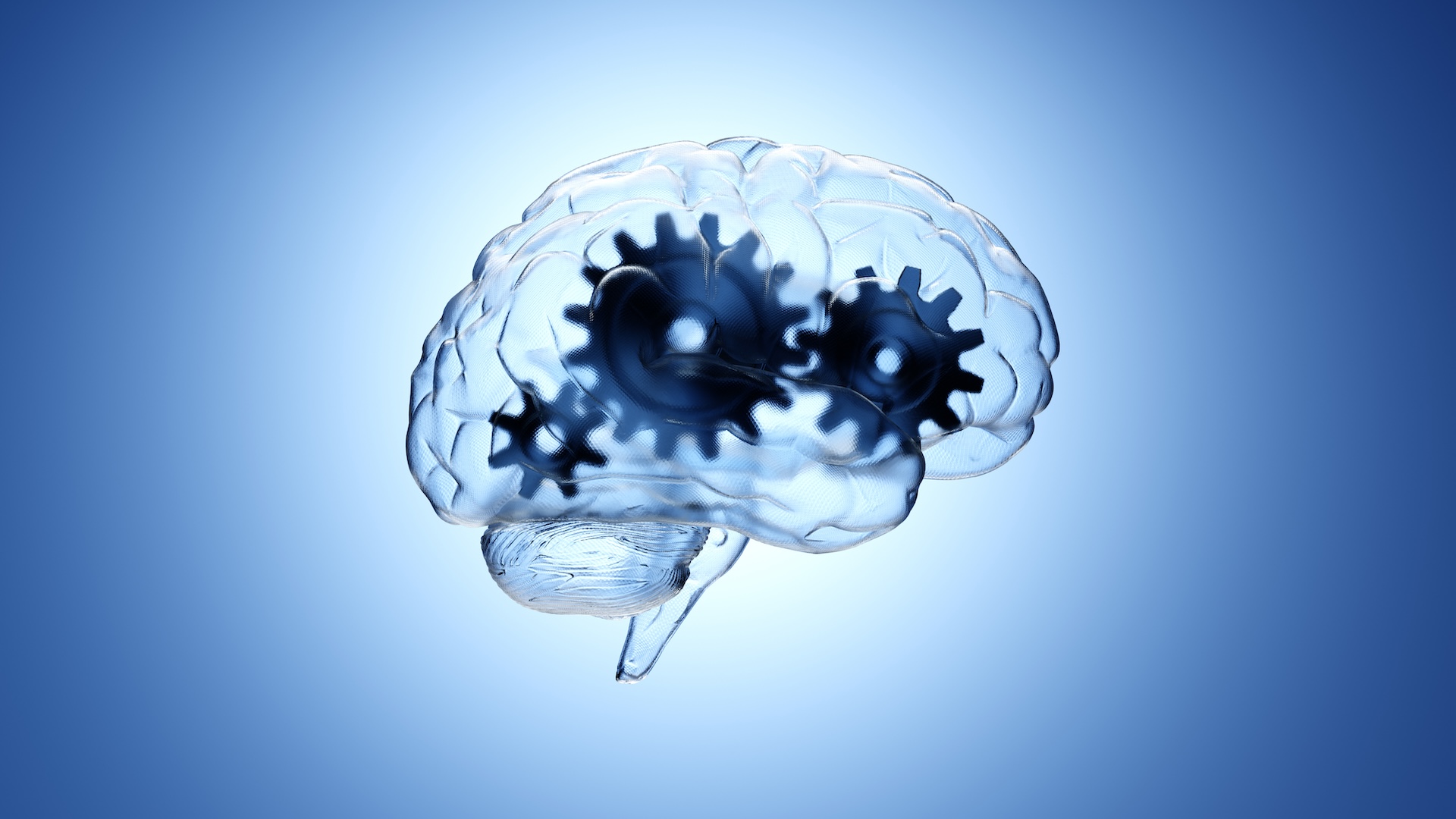
Scans Reveal Striking Similarity Between Human and Canine Minds (Op-Ed)

Marc Bekoff, emeritus professor at the University of Colorado, Boulder, is one of the world's pioneering cognitive ethologists, a Guggenheim Fellow, and co-founder with Jane Goodall of Ethologists for the Ethical Treatment of Animals. This essay is adapted from one that appeared in Bekoff's column Animal Emotions in Psychology Today. He contributed this article to LiveScience's Expert Voices: Op-Ed & Insights.
Do dogs love us and miss us when we're not around? As a dog lover, it's easy to answer those questions with a resounding and unquestionable "Yes!" But, what do the data say?
Psychology Today contributor and Emory University neuroeconomics professor Gregory Berns provided an answer in a recent essay in theNew York Times called "Dogs Are People, Too" and in his new book titled "How Dogs Love Us: A Neuroscientist and His Adopted Dog Decode the Canine Brain" (New Harvest, 2013). The works arebased on research from the Dog Project, in which dogs are treated as persons and partook only if they wanted to. Both are must reads for everyone interested in nonhuman animal (animal) emotions.
The answers Berns provides below reveal much about what he and his colleagues study and what they have discovered.
Why did you start the Dog Project?
Two years ago, my favorite dog — a 14-year-old pug named Newton — died. After he was gone, I wondered if he had loved me the same way I had loved him. It seemed impossible to know. I had spent the last 20 years using brain imaging to study how the human brain works, and after Newton died, I realized that we could use the same tools to understand how the canine brain works. Dogs are very special animals. They have been with humans far longer than any other creature, and yet we really don't know what they are thinking. (Author's note: Based on detailed behavioral studies in dogs and many other species, we do indeed know what other animals are thinking and we are very good at predicting their behavior in a wide variety of contexts.)
Where do the dogs come from?
All of the dogs are owned and trained by people in the Atlanta, Ga., community. They volunteer their time to participate mostly out of a love for their dogs and a curiosity to figure out what dogs are thinking. Many of our team members have experience raising service dogs for local and national service-dog groups. Others enjoy agility competition. Several of the dogs were adopted from shelters or rescue groups. We do not use, nor do we support the use of dogs (usually beagles) that have been purposely bred for research.
How does magnetic resonance imaging (MRI) tell you what a dog is thinking?
We use a technique called functional MRI (fMRI). When neurons are active, they require more blood and oxygen, which is picked up with fMRI. The technique has been used in humans for 20 years.

Is fMRI testing dangerous to the dog?
MRI uses a strong magnetic field (60,000 times the Earth's magnetic field). By itself, the magnetic field poses no danger to the dogs. However, the field is strong enough to pull metallic objects into the magnet, making them projectiles. Just like human patients, we take extra care to make sure there is no metal on the dog, or the humans in the room. We use only nylon collars. Microchips are MR-safe. As part of the MRI process, the scanner emits radio waves to excite protons in the body (this is the 'R' in 'MRI', standing for 'resonance'). Because some dogs do not weigh very much, we take care to limit the amount of radio waves emitted. The FDA sets limits on the radio power for humans by weight, which we follow for dogs. Finally, MRIs are loud. To protect the dogs' hearing, we train them to wear ear muffs.
What have you discovered?
Dogs' brains, in many ways, look and function just like human brains. We share many of the same basic structures (called a 'homology'), including a brain region that is associated with positive emotions. We are also beginning to understand how the dog's powerful sense of smell works to identify the members of his household.
A paradigm shift is in the works
We can no longer hide from the scientific evidence. All in all, dogs and humans show striking similarities in the activity of an important brain region called the caudate nucleus. So, do dogs love us and miss us when we're gone? The data strongly suggest they do. And, those data can further move humanity away from simplistic, reductionist, behaviorist explanations of animal behavior and animal emotions and also be used to protect dogs and other animals from being abused. Right now, animals are legally considered to be property, just like a backpack or bicycle.
To quote Professor Berns: "But now, by using the MRI to push away the limitations of behaviorism, we can no longerhide from the evidence. Dogs, and probably many other animals, especially our closest primate relatives, seem to have emotions just like us. And this means we must reconsider their treatment as property. . . . Perhaps someday we may see a case arguing for a dog's rights based on brain-imaging findings." I'm sure society will as these data greatly expand what people know about the minds of other animals.
I'd argue that Berns could have made a stronger statement and not used the phrase "seem to," because available data clearly show that many other animals have very rich and deep emotional lives and that the question at hand is why did emotions evolve — and what are they good for — rather than if they've evolved. Furthermore, while some critics of Berns's work feel that he is suggesting that prior to his studies researchers didn't really know if other animals were smart and emotional beings, this is not so. He hasn't "reinvented the wheel" so to speak, and never suggested that he has. However, he has, indeed, expanded the methods by which scientists can access the minds of other animals, and this is an important move.
Another important question needs to be addressed: Are the emotional lives of other animals exactly the same as those of humans? Scientists really don't know, and that isn't an important issue: Different people experience joy and grief differently, for example, but we don't say that if those emotions differ then one person feels something and the other doesn't. My sisters and I responded to, and grieved, the death of our parents rather differently, however we all felt deep grief at their passing. Similarly, dogs and other animals surely show individual differences in how they experience various emotions and this also is an intriguing area for future research, a point I emphasized in my books "The Emotional Lives of Animals" (New World Library, 2008) and, with Jessica Pierce, "Wild Justice: The Moral Lives of Animals" (University of Chicago Press, 2010).
Move over B F. Skinner and those who defy and deny what scientists know by continuing to claim that people who say that other animals have rich and deep emotional lives are being overly sentimental and "soft", anthropomorphic and non-scientific. They're wrong.
The work of Professor Berns and his colleagues is a true paradigm shift in how people study the brains of nonhuman animals and learn about what they feel — their panoply of emotions — that are very much like our own.
Bekoff's most recent Op-Ed was "Is it Ever Right to Hang a Husky?" This article was adapted from "Dogs Are People, Too: They Love Us and Miss Us fMRI's Say" in Psychology Today. More of the author's essays are available in "Why Dogs Hump and Bees Get Depressed." The views expressed are those of the author and do not necessarily reflect the views of the publisher. This version of the article was originally published on LiveScience.
Sign up for the Live Science daily newsletter now
Get the world’s most fascinating discoveries delivered straight to your inbox.










